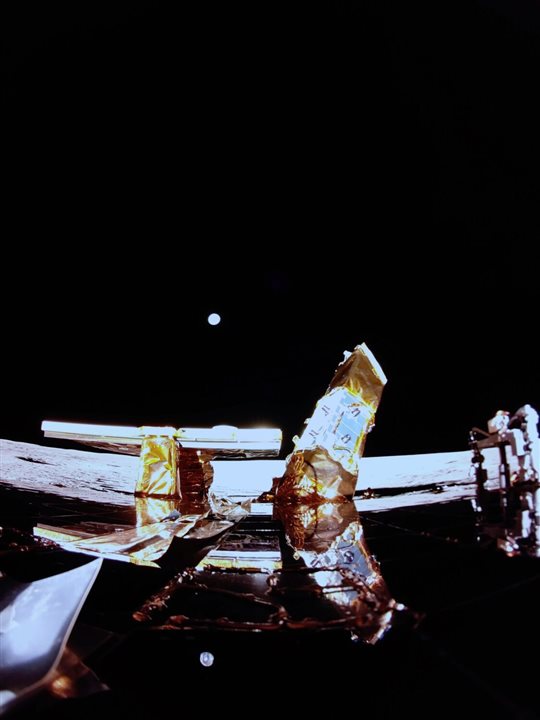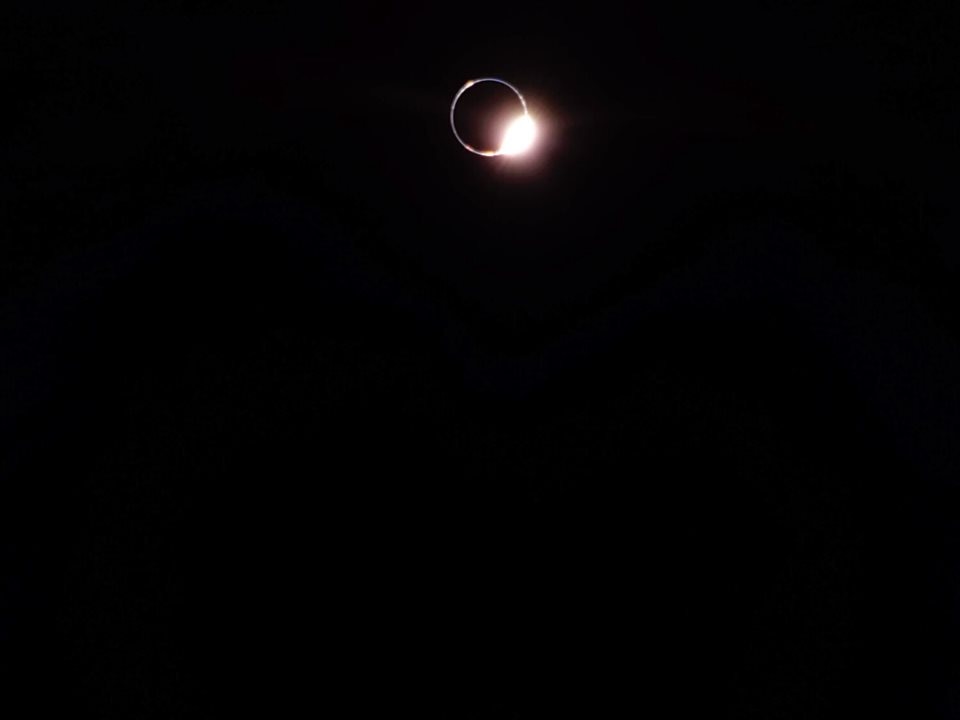
The Blue Ghost spacecraft touched down on the lunar surface, capturing an image of Earth on the horizon. (Image Credit: Firefly Aerospace)
In March, Firefly Aerospace landed its Blue Ghost spacecraft on the Moon's surface, touching down "in an upright, stable configuration." This marks the second time a private spacecraft achieved this feat. Last year, Intuitive Machines' Odysseus lander touched down, becoming the first US spacecraft since Apollo 17 to land on the lunar surface. However, that mission didn't last long, as the spacecraft toppled over.
Blue Ghost launched on January 15th aboard SpaceX's Falcon 9 rocket from Cape Canaveral. It took the spacecraft 45 days to travel 2.8 million miles to reach the Moon. Blue Ghost landed 100 meters away from its target near Mons Latreille within Mare Crisium, an over 300-mile-wide basin in the northeast quadrant of the Moon's near side. The lander also captured high-resolution images of the March 14th total eclipse.

Blue Ghost captured an image of the eclipse on March 14th and the diamond ring effect it produced. (Image Credit: Firefly Aerospace)
Along the way, the spacecraft downlinked over 27GB of data and supported several science operations. For example, the robotic lander performed signal tracking from the GNSS at 246,000 miles with the Lunar GNSS Receiver Experiment payload. This demonstrates NASA's ability to use the same Earth-based positioning systems while on the Moon. Blue Ghost used the Radiation Tolerant Computer System payload to conduct radiation-tolerant computing through the Van Allen Belts. It also measured magnetic field changes in space via the Lunar Magnetotelluric Sounder payload.
"This incredible achievement demonstrates how NASA and American companies are leading the way in space exploration for the benefit of all," acting NASA Administrator Janet Petro said. "We have already learned many lessons – and the technological and science demonstrations onboard Firefly's Blue Ghost Mission 1 will improve our ability to not only discover more science but to ensure the safety of our spacecraft instruments for future human exploration – both in the short term and long term."
The lander lasted 14 Earth days (one full lunar day), operating for 346 hours before running out of power and losing communication on March 16th. While on the lunar surface, Blue Ghost performed lunar subsurface drilling, sample collection, X-ray imaging, and dual mitigation experiments. The goal of these experiments is to help NASA with landing crewed astronaut missions on the Moon.
Have a story tip? Message me at: http://twitter.com/Cabe_Atwell
